A COOLER climate, reliable rainfall and perceived value for money are some of the key drivers for southern producers considering the financial viability and attraction of expanding, by relocating to the New South Wales’ New England region.
For those southern state producers seeking to take advantage of current market conditions and expand, there are plenty of good reasons to carefully do their sums and consider heading north.
Good seasonal conditions, low interest rates, strong commodity prices and lack of supply have driven up property values in southern New South Wales, Victoria and South Australia, from varying degrees of modest to exceptional value growth.
Angus Shaw, Herron Todd White’s south east regional valuer, said many family farmers in southern Australia with a solid equity position were seeking to expand significantly.
“This has resulted in sales of many smaller add-on blocks in southern areas at record levels. Larger properties, such as Banongill Station in Victoria’s Western District, have been split up and sold back to locals.”
In October last year, agricultural fund manager, Laguna Bay offloaded the 8200ha cropping and livestock holding, Banongill for around $80 million to a consortium of local farming families.
Mr Shaw said demand for land continued to outstrip supply which will likely result in more price records following the current harvest.
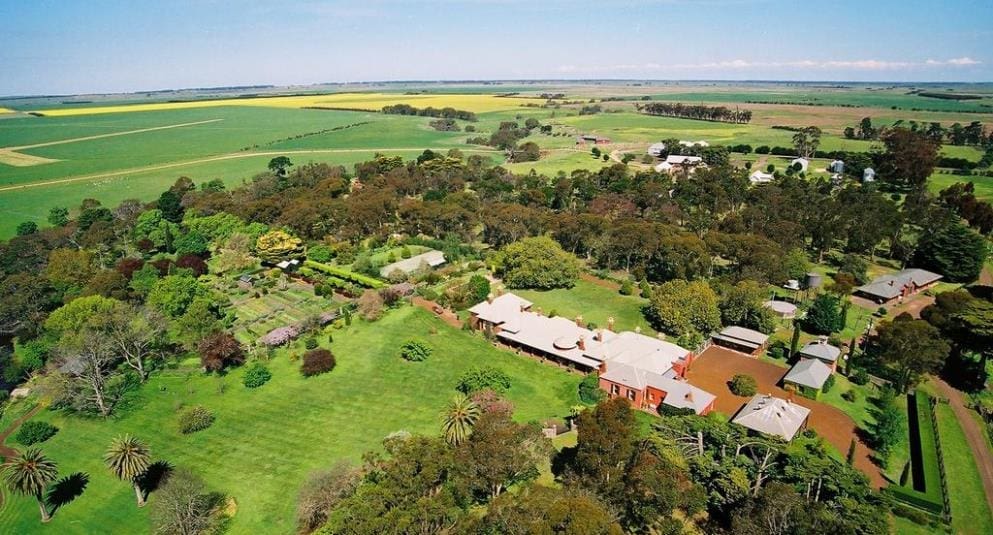
In October last year, agricultural fund manager, Laguna Bay offloaded the 8200ha cropping and livestock holding, Banongill for around $80 million to a consortium of local farming families.
Northward bound
Mr Shaw’s New South Wales country counterpart, Scott Fuller, said southern capital looking to deploy further north was not a new trend.
“There have always been producers looking at geographical diversity (rainfall and scale), particularly Victorian producers seeking country in central western New South Wales,” he said.
Mr Fuller explained property markets don’t move the same everywhere, and that current activity had reached an elevated level.
“It is characterised by a big burst of activity and a value increase. Eventually, locals recognise the value elsewhere and that is why it quietens down in one area, and picks up in another. Very strong values are currently being achieved in an area from Holbrook to Albury, and across to Wagga and Gundagai,” he said.
In December last year, two prime cattle properties in the Eastern Riverina district sold at auction for a combined total of $30 million.
The 432ha Arthurs was secured by Rennylea Angus, owned by the neighbouring Corrigan family, for $9.55m – setting a Culcairn district record of $22,106/ha.
Riverina Angus cattle breeders Frank and Andis Sorraghan paid $19.7m for the 1295ha Culbara at Woomargama, a new record for the Holbrook district at $15,212/ha.
Mr Fuller said the sale of Arthurs did not reflect the actual market.
“The price reflected what happens when two high-net-worths vie for the same property. The sale of Culbara was strong, but still within the realms of the market value.”
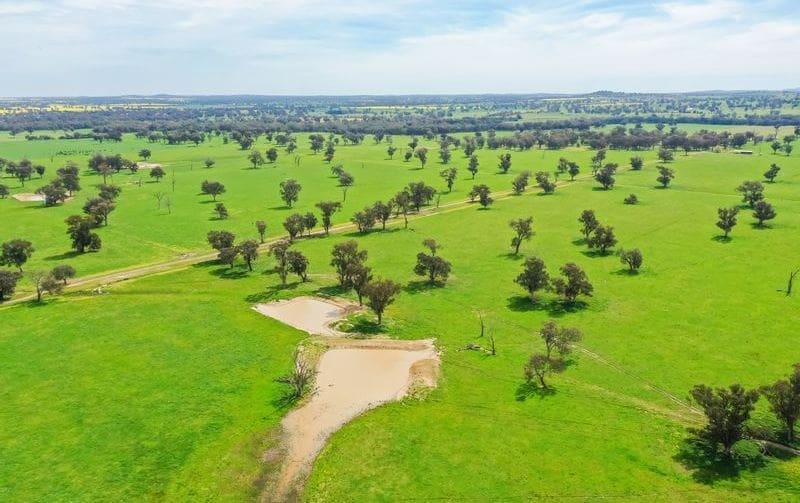
The 432ha Arthurs was secured by Rennylea Angus, owned by the neighbouring Corrigan family, for $9.55m – setting a Culcairn district record of $22,106/ha.
Looking elsewhere
Mr Fuller said when such high prices are being paid, some locals can’t compete and decide to look elsewhere – and at present, the central west, far west and New England appeared to provide better value for money.
“The owners of the capital looking to deploy in agriculture are astute. They analyse where the best value is. Generally, there is a valid case where the neighbouring property is worth 15 percent above what everyone else is prepared to pay.”
However, he said when values rise to such an extent that a property, capable of running the same stocking level in a different area, can be found at rates that are 20 to 30 percent less, then purchasers will begin to move to different areas.
Angus McLaren from Miller & James Real Estate (Temora and West Wyalong NSW) said property prices in southern New South Wales were currently at record levels.
“While most areas in northern NSW were drought stricken, southern parts were getting enough rain during the winter to plant dual purpose grazing crops to feed livestock,” Mr McLaren said.
As a result, many made a profit.
“For instance, a Wallendbeen cattle trader purchased cheap steers from northern parts where there was no feed and brought them back to his property to fatten them. He later sold those steers for very good money.”
Mr McLaren believes some producers are considering relocating because the New England offers better value for money, on a per hectare basis.
“While the New England region has always been reliable, the dry seasonal conditions saw the tables turn and Southern NSW became the flavour of the month. Conversely, in the early 2000s, land prices in Moree were higher than Temora.”
Mr McLaren said values in Wagga, Cootamundra and Young had doubled in the last three years, and today start at between $14,800/ha ($6000/ac) and $17,399/ha ($7000/ac). Grazing properties in Temora trade between $7400/ha ($3000/ac) and $12,300/ha ($5000/ac), while those in West Wyalong and Condobolin sell for $2900-$4000/ha ($1200-$1600/ac).
HTW’s Scott Fuller supports Mr McLaren’s estimates with a property he has been valuing for the past eight years – not a sale, but a market assessment.
The large-scale grazing and farming enterprise featuring arable grazing country is situated to the north west of Young.
Mr Fuller said the land value only component of the property was growing steadily until 2018, with a significant rise in the 2018 to 2021 period. He valued the change below:
- 2013 – $4000/ha
- 2016 – $4800/ha
- 2018 – $6200/ha
- 2021 – $12,000/ha
Meantime, Angus McLaren has just listed the 4155ha historic Euglo, regarded as one of the finest properties west of the Newell Highway.
Located between West Wyalong and Condobolin, it combines scale, soil quality, reliability and versatility.
Euglo is estimated to be likely to sell for $3220-$3700/ha, or between $13.5m and $15.6m. With already strong interest, especially from Victorians, it will be interesting to see what the property actually makes.
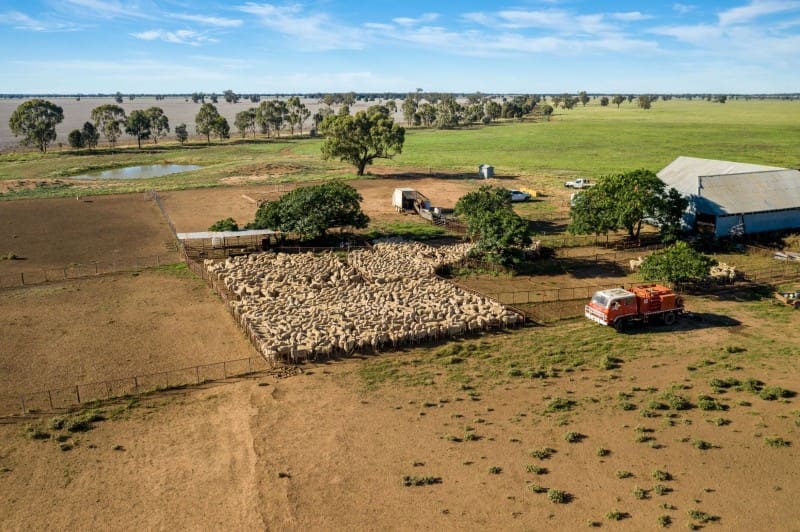
The 4155ha historic Euglo is regarded as one of the finest properties west of the Newell Highway.
New England interest
Geoff Hayes from Ray White Rural at Glen Innes reports widespread interest in the New England region from producers seeking safe grazing country in a cooler climate.
“A higher number of inquiries than usual is coming from producers in southern Australia, particularly in New South Wales’ Riverina where mixed farming prices have risen,” he said.
Mr Hayes said these southern producers were being outpriced by local land values.
“The dynamics of the red meat industry have never been so bright, and many producers are wanting to capitalise on red meat prices by expanding, relocating or diversify their operations,” he said.
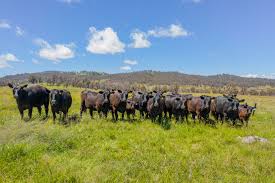
Dunvegan aggregation north of Glen Innes is a 1765ha low-labour input breeding and fattening property feature mostly open grazing country supporting 700 breeders, as well as large areas suitable for cultivation.
“The New England’s cool climate has become a major selling point, and there is also the lifestyle component – located just a couple of hours from the coast,” he said.
Mr Hayes is currently marketing the Dunvegan Aggregation, north of Glen Innes.
The 1765ha low-labour input breeding and fattening properties feature mostly open grazing country supporting 700 breeders, as well as large areas suitable for cultivation.
Situated at Dundee in a 900 to 950 mm rainfall district, Dunvegan is watered by more than 40 dams and five creeks.
Graham MacDougall, the principal of the Armidale-based MacDougall Rural Property, agrees, saying the New England currently represents good value for money for interests from further south.
“The region appears to be out of step with other areas and as a result, any properties listed locally are selling quickly,” he said.
Mr McDougall said there was a wide land price variation in the New England depending on the type and location, with cow area prices ranging from $10,000 to $14,000, or $1500/ac to $5000/ac.
“I recently sold country for $4800/ac south of Walcha on a bare basis. Ebor and Dorrigo and good basalt properties command around $14,800/ha ($6000/ac) and beyond, and country from Walcha to Glen Innes averages around $7400/ha ($3000/ac).”
Mr MacDougall currently has three significant holdings listed for sale:
- Neighbouring properties Cleggswood and Meldon are located 22km and 18km from Uralla. Spanning 3708ha, they are priced at $13m.
- Uralla’s 2100ha Kurrajong Park, 45km from Armidale, boasting trap-soil country and high-quality infrastructure, fencing and water, is on the market for $8.2m.
- Bald Rock, 20km southeast of Tenterfield, features classic beef cattle country with a long history of running 450 breeders and backgrounding 800 feeder steers. It has a $6.5m price tag.
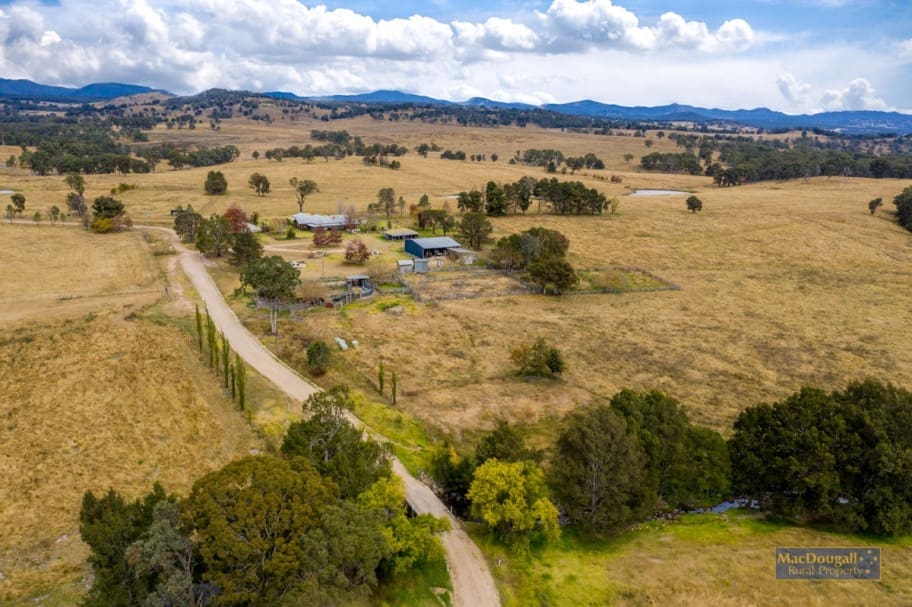
Bald Rock, 20km southeast of Tenterfield, features classic beef cattle country with a long history of running 450 breeders and backgrounding 800 feeder steers. It has a $6.5m price tag.
